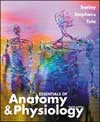 |
1 |  | 
The largest percentage of plasma is |
|  | A) | proteins. |
|  | B) | ions. |
|  | C) | nutrients. |
|  | D) | water. |
|  | E) | waste products. |
 |
 |
2 |  | 
The most important function of albumin in the plasma is |
|  | A) | to destroy foreign substances. |
|  | B) | to maintain osmotic pressure. |
|  | C) | blood clotting. |
|  | D) | transport other substances. |
|  | E) | for acid-base balance. |
 |
 |
3 |  | 
All of the formed elements of the blood are derived from |
|  | A) | erythrocytes. |
|  | B) | leukocytes. |
|  | C) | platelets. |
|  | D) | stem cells. |
|  | E) | neutrophils. |
 |
 |
4 |  | 
Hemoglobin molecules |
|  | A) | each contain 2 heme groups and 2 globins. |
|  | B) | bind to and transport most of the carbon dioxide in the blood. |
|  | C) | contain iron atoms. |
|  | D) | can each carry one oxygen molecule. |
|  | E) | are broken down in the red bone marrow. |
 |
 |
5 |  | 
Erythrocyte production |
|  | A) | is stimulated by erythropoietin. |
|  | B) | requires folate, B12, and iron. |
|  | C) | is stimulated by low O2 levels in the blood. |
|  | D) | occurs in red bone marrow. |
|  | E) | all of these. |
 |
 |
6 |  | 
The two leukocytes that are most important for phagocytizing microorganisms and foreign substances are |
|  | A) | basophils and eosinophils. |
|  | B) | neutrophils and macrophages. |
|  | C) | basophils and neutrophils. |
|  | D) | lymphocytes and monocytes. |
|  | E) | eosinophils and neutrophils |
 |
 |
7 |  | 
The leukocytes that produce antibodies and other chemicals? |
|  | A) | basophils |
|  | B) | eosinophils |
|  | C) | lymphocytes |
|  | D) | monocytes |
|  | E) | neutrophils |
 |
 |
8 |  | 
The leukocytes that release histamine and other chemicals that promote inflammation are |
|  | A) | basophils |
|  | B) | eosinophils |
|  | C) | lymphocytes |
|  | D) | monocytes |
|  | E) | neutrophils |
 |
 |
9 |  | 
Which of these steps is NOT a part of platelet plug formation? |
|  | A) | Integrins on the surface of the platelets adhere to collagen. |
|  | B) | Platelets release ADP and thromboxanes. |
|  | C) | Prothrombinase is released by smooth muscle cells. |
|  | D) | More platelets are activated and release ADP and thromboxanes. |
|  | E) | Activated platelets are connected to each other by fibrinogen. |
 |
 |
10 |  | 
Given these molecules: 1. fibrin 2. fibrinogen 3. prothrombin 4. thrombin, Choose the arrangement that lists the molecules in the order they are formed during clot formation. |
|  | A) | 1,2,3,4 |
|  | B) | 2,1,3,4 |
|  | C) | 3,2,1,4 |
|  | D) | 3,4,2,1 |
|  | E) | 4,3,2,1 |
 |
 |
11 |  | 
Which of these is NOT required for clot formation? |
|  | A) | calcium ions |
|  | B) | clotting factors |
|  | C) | plasmin |
|  | D) | platelets |
|  | E) | vitamin K |
 |
 |
12 |  | 
Anticoagulants found in the blood include |
|  | A) | plasmin. |
|  | B) | vitamin K. |
|  | C) | antithrombin. |
|  | D) | heparin. |
|  | E) | both c and d |
 |
 |
13 |  | 
Type A blood |
|  | A) | has type A antibodies. |
|  | B) | could be safely donated to someone with type O blood. |
|  | C) | has only the B antigen. |
|  | D) | would cause a transfusion reaction if donated to someone with type B blood. |
|  | E) | could receive blood from someone with type AB blood. |
 |
 |
14 |  | 
Which of these statements concerning hemolytic disease of the newborn (HDN) is true? |
|  | A) | The condition occurs with a Rh+ mother and a Rh- baby. |
|  | B) | The condition only occurs with a second (and later) Rh+ baby. |
|  | C) | Antibodies from the baby destroy erythrocytes in the mother. |
|  | D) | To prevent HDN, RhoGAM is given to the baby after it is born. |
|  | E) | Most people in the U.S. are Rh-, so problems with HDN are rare. |
 |
 |
15 |  | 
Which of these tests could indicate polycythemia? |
|  | A) | RBC (red blood cell count) |
|  | B) | WBC (white blood cell count) |
|  | C) | white blood cell differential count |
|  | D) | platelet count |
|  | E) | prothrombin time |
 |



 2002 McGraw-Hill Higher Education
2002 McGraw-Hill Higher Education